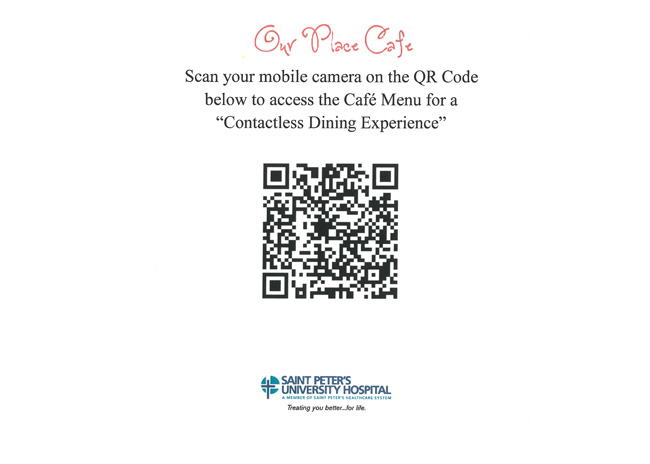“We’re doing a cost analysis to decide if we need a preventive maintenance program and making extending equipment life a priority.”
 Aatul Jain, CDM CFPP, Executive Chef, Saint Peter’s University Hospital, New Brunswick, N.J.In the short term, three major forces shape what we’re focusing on: infection prevention, cost savings and technology. Each is having a significant impact on our dining programs.
Aatul Jain, CDM CFPP, Executive Chef, Saint Peter’s University Hospital, New Brunswick, N.J.In the short term, three major forces shape what we’re focusing on: infection prevention, cost savings and technology. Each is having a significant impact on our dining programs.
Like almost everyone in the industry right now, we’re facing significant financial contraction. While our revenues have traditionally been generated equally by catering, patient service and retail, catering has stopped, and retail is down to 20% of total revenues. Patient volume is down and highly variable, and we don’t anticipate a rapid recovery.
So, what are we doing? We’re working smarter and planning for the future. In the short term, we’re focused on retaining existing staff, providing safe grab-and-go retail services and reducing food costs. We’re reviewing all vendor contracts and carefully weighing the pros and cons of what’s offered versus simply extending existing partnerships. We’re consolidating menus and eliminating slow-moving and/or higher-cost items from regular menus.
The pandemic has also taken us —the industry overall — back to basics. We’re back to meatloaf and roast turkey and foods that are comforting and travel well. Some culinary innovation is necessarily on hold, but the focus on quality has sharpened. We’re talking about the best meatloaf, the best mashed potatoes, the best quesadilla. Global soulfood is being elevated across the board and across the world.
Also in the short term, demand for grab-and-go has increased our spend on disposables. As a result, we’re consolidating the variety of disposables we use to reduce waste, minimize non productive expenditures and find ergonomic efficiencies.
Budget reductions impact equipment too. Our capex [capital expenditure] spend is now technically zero, but that’s not feasible, of course. So, any emergency capital expense must be justified. We’re doing a cost analysis to decide if we need a preventive maintenance program and making extending equipment life a priority. To that end, we’re conducting quarterly training on daily and periodic cleaning procedures and handling of equipment.
For both the short and long term, we’re aggressively focused on technology. Nonprofit acute-care operations have been slow to adopt tech-based solutions for foodservice due to capital investment, focusing instead on patient care priorities. Now, however, there is no other option from a cost and labor perspective. We’re researching what’s out there, what restaurants are doing and what we can we pull from those best practices. We’re looking at solutions such as robotics, artificial intelligence, next-gen vending and contactless systems.

As a start, we’re about to introduce a new, custom-developed QR code for retail dining. When employees or guests scan the code, they’ll access our menu and be able to place orders from their phones. Eventually, we hope to expand the program to patient dining.
We don’t want to lose the human interaction, but looking five years out, we have to explore staffing options due to this new technology. To maintain contact on the customer front, we need to apply tech-based solutions behind the scenes.
Many of those solutions will be equipment-based, with innovation flooding the market next year. Robotics is here already in meal delivery and, to a tiny extent, in food production. That will evolve expeditiously into other equipment segments. There are pros and cons to excessive automation — but it is the future, and we need to embrace it.



